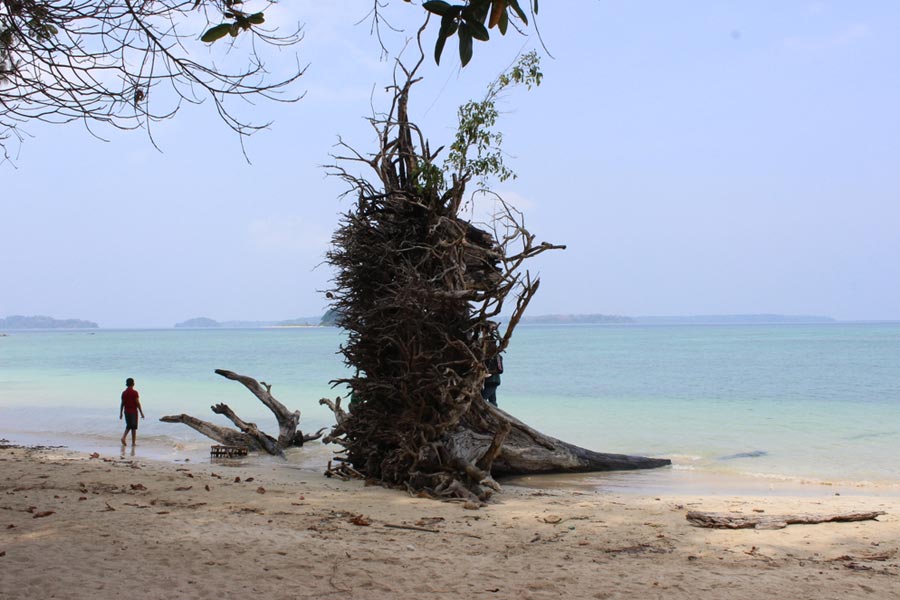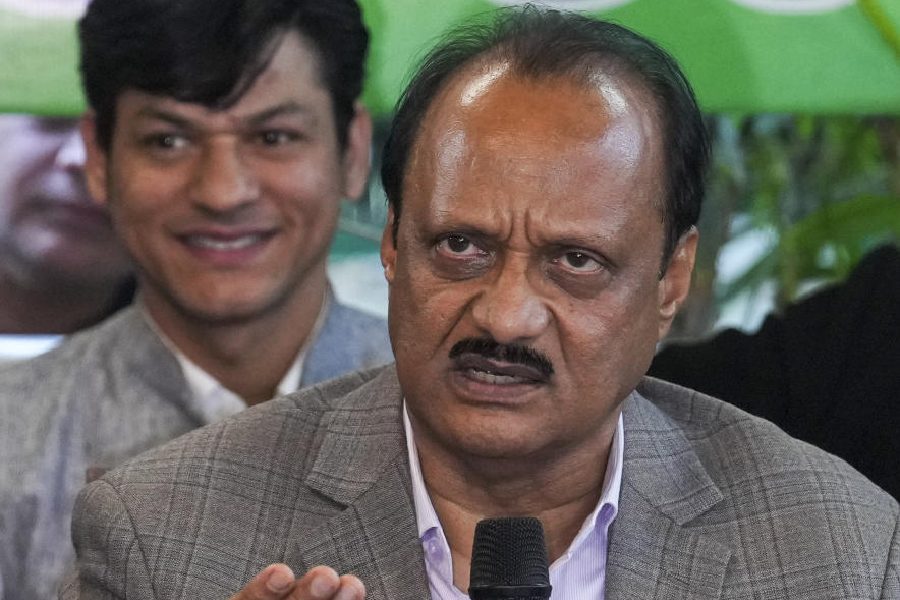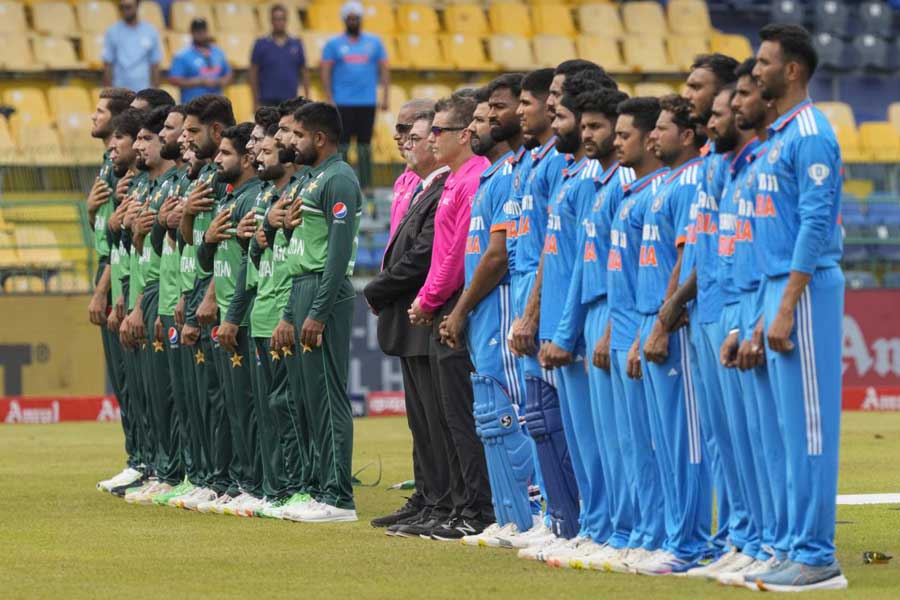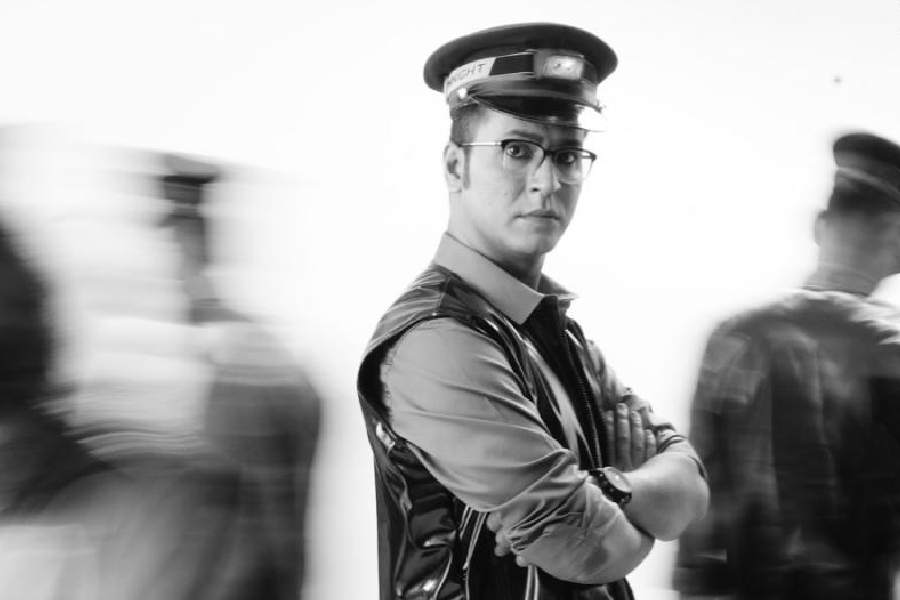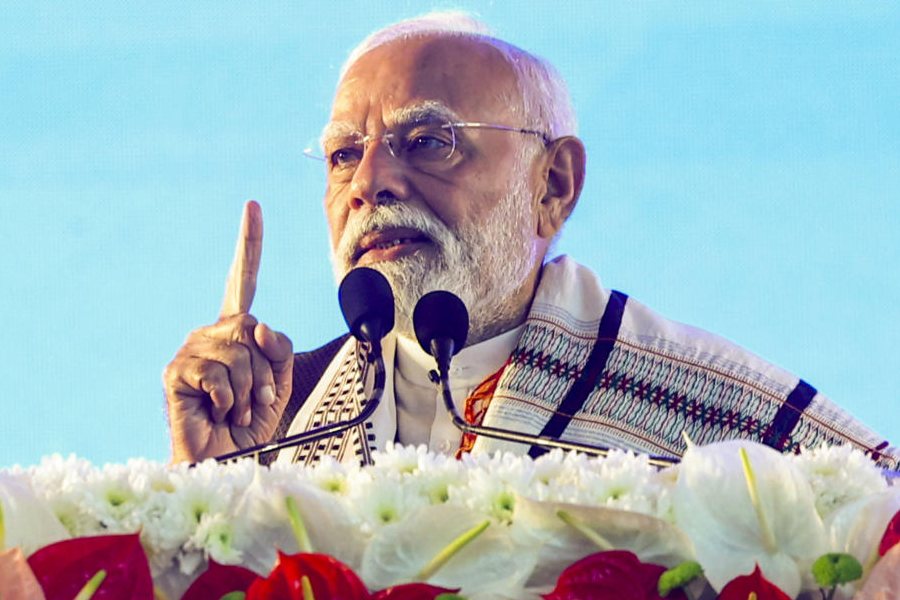 |
| Harsh indictment: Nirjatan 9 by Shakila |
CIMA’s summer show, on till July 16, is an assemblage of the old and the young, the seen and the unseen, the known and the new. While established seniors like Somnath Hore, K.G. Subramaniyan, Jogen Chowdhury, Uma Siddhanta, Sharbari Roy Chowdhury and Lalu Prasad Shaw lend it the weight of age, some younger artists continue their blithe adventure of exploring art language.
The ‘nowest’ among the new proclaims the crass, brash cool of GenNext in the blasé strut of exhibitionism mined from the visual vocabulary of advertising and fashion. A young woman’s body beautiful strikes a pose that, for all its aloof hauteur is, in fact, anonymous in its generic cultivation. Not surprisingly, there looms the concrete jungle in the background, sketched in brusque, jagged lines. And, of course, the canvas by Satyaranjan Sarkar is titled — what else?— Brave New World.
Abhijit Gupta’s postmodern “pat”, called Yama-Pata — Yama being the Hindu god of death — is a series of glass-fronted cases displaying black-and-white photographs of a man’s face that are cut up in different ways and combined with accoutrements such as ropes, clothes clips, spikes and hooks, all in red. The mocking wit is sharpened by the possibility that the icon of yamadom, the man of the photographs, is the artist himself. One photo unzips his face down the middle to reveal the innards of his skull as a tangle of red rope. Another, sliced in vertical strips, is hung up with clips like rags on a clothesline. A third is pierced at the top by a giant hook which, sticking out from either side of the forehead, looks like horns to turn the face satyric. In the artist’s experimentation what is welcome is his sense of wry sport.
Akhilesh is a subtle formalist, teasing the discipline of geometry with breaks and variations that breathe emotion into diagrammatic schemes. These have the same layout of tiny horizontal strips of colour arranged neatly in narrow vertical bands. Variations 1, seen at an earlier show, is charged with motion and hence a continuous rhythm of change. His other work at the show, a largish untitled canvas, is more reflective, though not without a vein of nervous romanticism that’s as much because of the palette of black, white and blues as of the frayed edges to the colour strips.
Vishakha Apte’s small oil on handmade paper boasts compelling brevity. The suggestions of a weary end to something come across strongly. As though things like planks and other objects, not always clearly defined, have been discarded after some event, after the dismantling of a structure. What lingers is the refrain of desolation. Afterwards. Desolation, spiritual desolation, defines Ketaki Roy Choudhury’s acrylic on glass. The lowering skies and vast spaces someplace in the hills, a line of pennants fluttering in the wind that you can almost hear rushing down from snow peaks, expose as trivial and transient man’s petty concerns in the face of the enduring, the eternal.
One section of the show is devoted to Shakila’s collages mostly taken up with social concerns, particularly the gender theme. Her imagery has the virtue of simplicity so that its appeal is direct and even, at times, poignant. Like in Suicide. But the series called Nirjatan (Torture) is harsher, more searing in tone as the indictment of male violence against women hits you in the plexus in Nirjatan 9. The demeaning helplessness of the woman whose legs are held up and apart in this work or the way a woman’s body lies lifeless on the ground in Nirjatan 6 indicate the narrative plasticity of the craft the artist has been using. Another collage that makes eyes pause is Sate III because of the brittle ambiguity of the atmosphere induced through a predominance of black-and-grey shadows.
Swapnendu Bhaumik interprets My City in terms of zones of tones and textures. Bright colours, especially canary yellow along with dashes of red and blue-green, impart a zesty youthfulness to the abstract work. Manoj Kachangal’s four acrylic landscapes on paper are radiant with spreading, bleeding, blending stains of rich colours arranged in horizontal segments.
Chintan Upadhyay and wife Hema are, as usual, bold in the poster-like forcefulness of the image that shows them kissing. A. Balasubramanium’s work is lively for the squiggly little figures that press increasingly closer towards the bottom till they form a grey mass. The oil canvases of Seema Ghurayya in diaphanous layers of off-white and beige with hints of lines and textures are meditations on form and sophisticated in their understatement.
Others works to note come from Ravindra Reddy, J. Swaminathan, Paresh Maity, Samir Aich, Ramlal and Sohini Dhar and Ashok Mullick.





